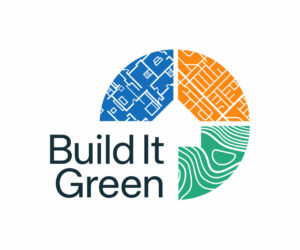Community Changemakers
Rich Chien of the San Francisco Department of the Environment
This conversation is part of our Community Changemaker Series. Build It Green is talking to people who are tackling climate change, addressing social inequity, and revitalizing communities through their work in the residential building sector. These innovators demonstrate what outcomes are possible when you think beyond a single problem and consider more multifaceted solutions. In highlighting these leaders and their work, we aim to spark ideas, drive discussions, and inspire others to engage and take action.
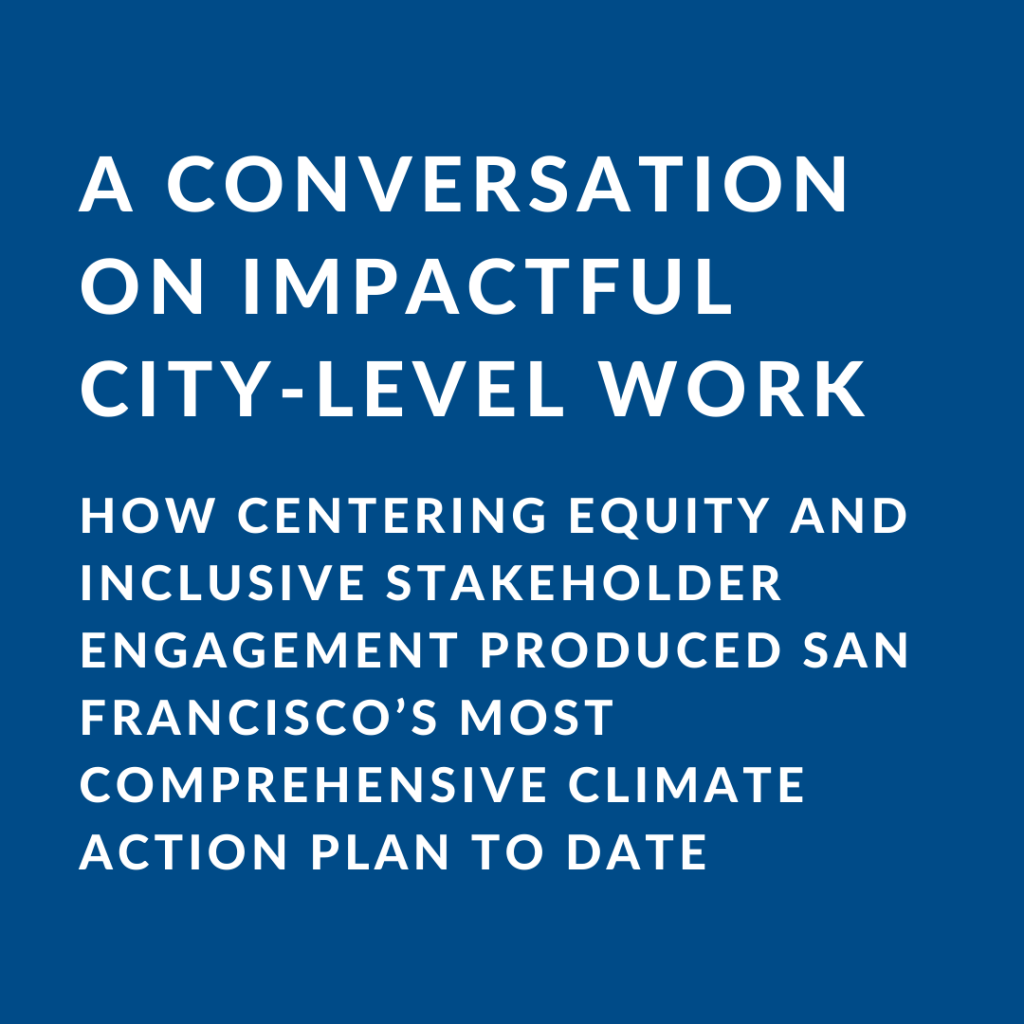
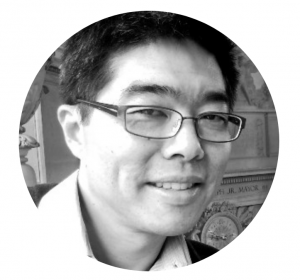
Rich Chien, Senior Environmental Specialist
2021 Climate Action Plan Project Lead

Background
We recently had the pleasure of sitting down and speaking with Rich Chien, a Senior Environmental Specialist and 18-year veteran with the San Francisco Department of the Environment. In his time with the City, Rich has worked with countless groups of diverse stakeholders—he’s collaborated with building professionals to develop green building standards for new construction, partnered with community organizations to bring equitable, place-sourced improvements to San Francisco’s Chinatown, and more recently, met with stakeholders to discuss equity concerns around building decarbonization.
In 2019, he carried this experience forward as the project lead for San Francisco’s 2021 Climate Action Plan. Developed with 82 city staff across 20 departments, the plan details 31 strategies and 159 supporting actions to eliminate GHG emissions and advance environmental justice work in San Francisco over the next 20 years.
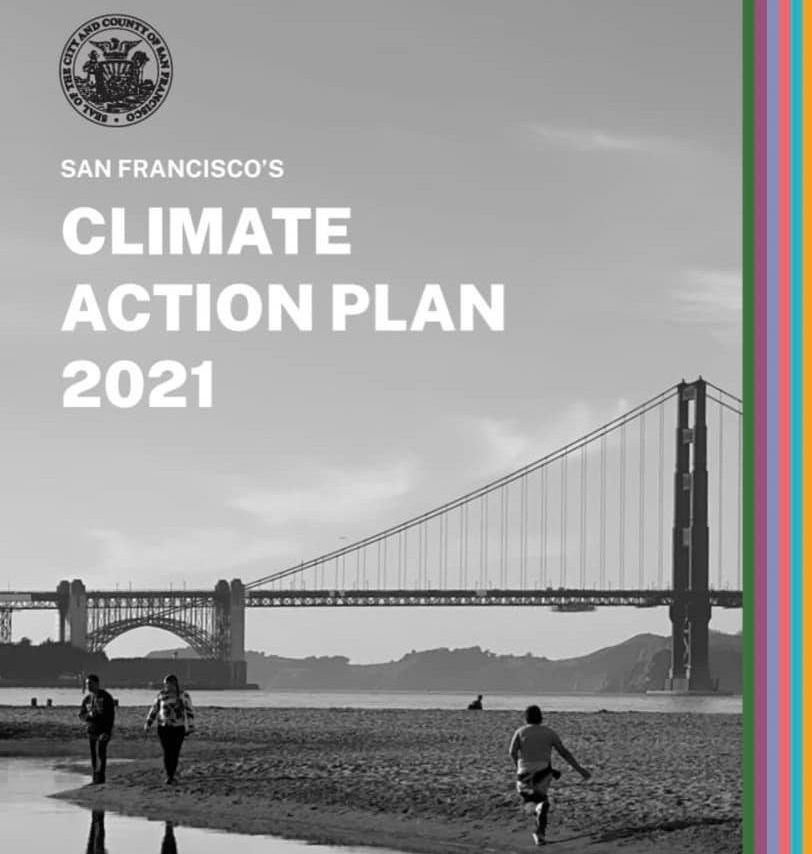
Cover of San Francisco’s 2021 Climate Action Plan.
Q&A with Rich
Responses have been lightly edited for clarity.
What are some of the key projects you’ve worked on with the City?
My early work with the city was centered around establishing Leadership in Energy and Environmental Design (LEED) standards for city projects and introducing the rating system and integrated design process to city architects and planners. With the help of a stakeholder task force comprised of local building professionals, this work evolved to us basically co-crafting LEED Silver for new construction in 2008 and establishing green building standards for private development. It’s amazing to think that this work and the subsequent updates we made to the green building code culminated in the passing of last year’s all-electric new construction ordinance!
Fun fact: The City referenced GreenPoint Rated for residential buildings during this process!
Another project I’m particularly proud of is Sustainable Chinatown, a public-private partnership with Chinatown Community Development Center, the City’s Planning Department, and Enterprise Community Partners. The project explored how sustainability and equity could be incorporated as development goals to better support and benefit communities, and we were able to get some good catalytic work done in the process. For example, we successfully advocated for the addition of a 166.4kW solar rooftop solar system to the Ping Yuen development, which wasn’t initially included in the project but was later added to the budget based on its potential to save over $30,000 in energy costs each year.
We also brought some information to the city architects about how it’s important for large, expensive infrastructure projects like Sustainable Chinatown to support community resilience. Recognizing that Portsmouth Square—a park many consider Chinatown’s ‘living room’—already plays a key role in providing general community news and updates, the city is now in the process of revamping it into a community resilience hub.
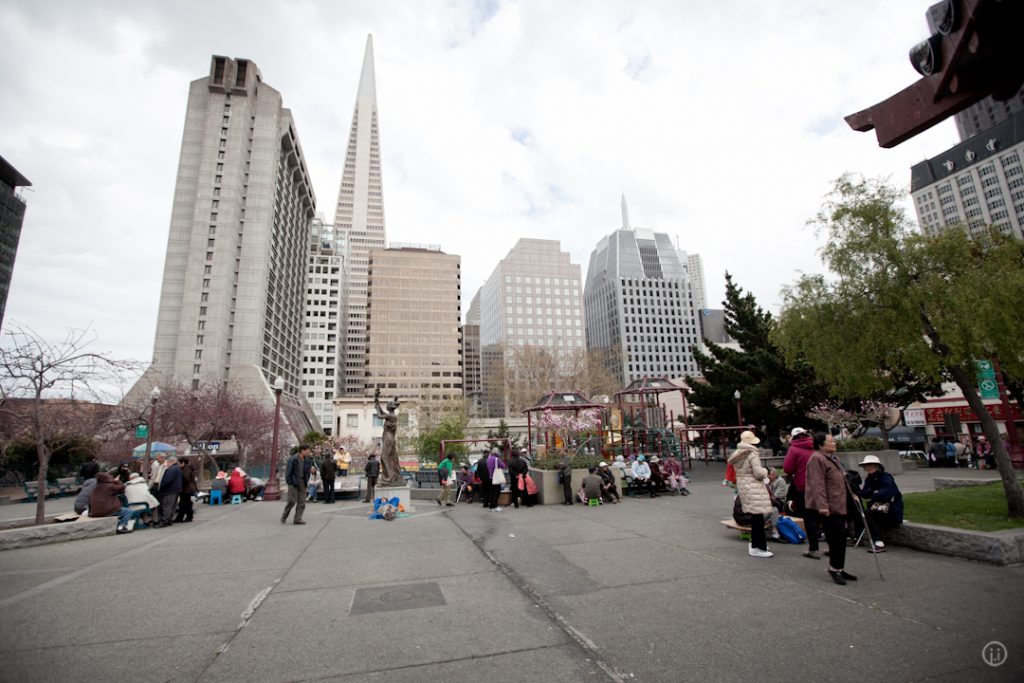
The [Racial and Social Equity Assessment Tool (R-SEAT)] made it possible to avoid ideas that would be great for carbon reduction but inadvertently exacerbate existing inequities, such as decarbonization policies that result in displacement or rent increases.
Rich Chien, SF Environment Tweet
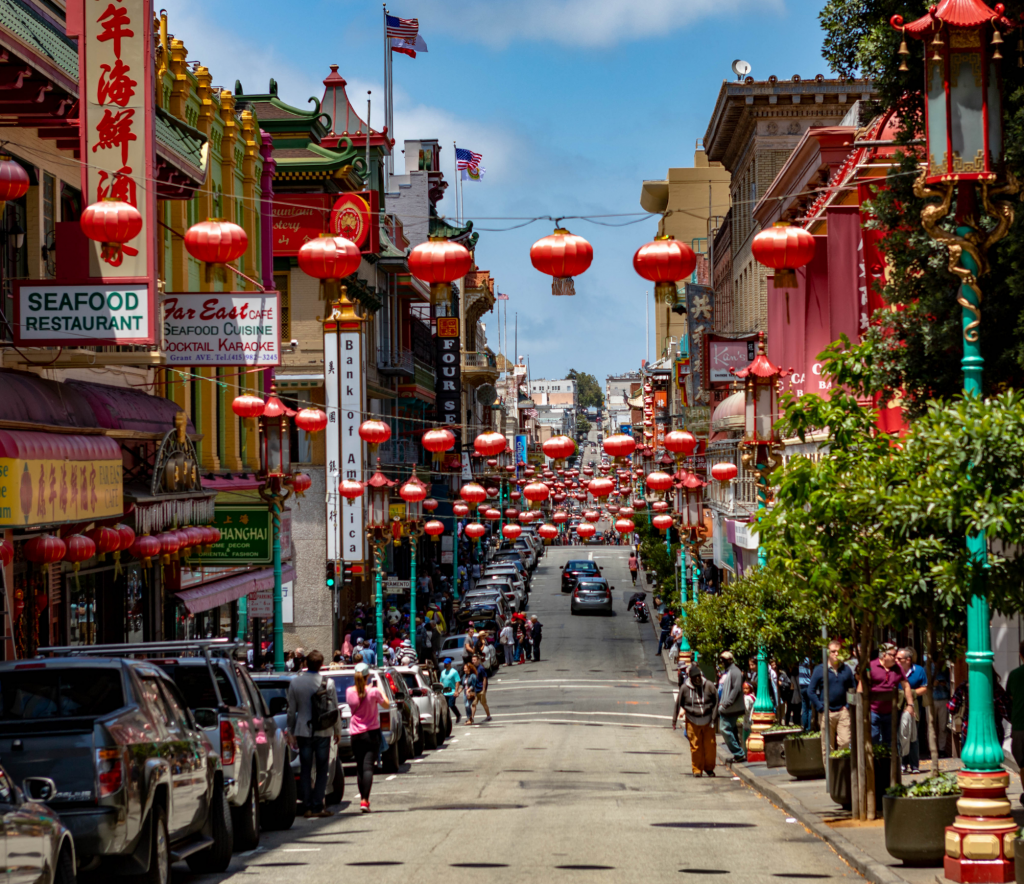
Grant Street in San Francisco Chinatown.
What were some of the main priorities and challenges in developing the Climate Action Plan (CAP)?
We knew that buildings were going to play a big role in the CAP. We also recognized that there are a lot of equity issues intertwined with decarbonizing buildings—especially residential ones.
With this in mind, we worked with PODER and the Emerald Cities Collaborative to pull together a stakeholder engagement process called the Anchor Partner Network. Together, the network explored many questions around equitable building decarbonization: What are the key concerns? Who are the players that need to be at the table? What are the policy ideas we can put forward to mitigate unintended consequences if we require decarbonization? All of the recommendations basically flowed right into the CAP, which started soon after this work.
This process also informed the development of the Racial and Social Equity Assessment Tool (“R-SEAT”), which was used to screen every draft CAP action across a range of equity considerations. This made it possible to avoid ideas that would be great for carbon reduction but inadvertently exacerbate existing inequities, such as decarbonization policies that result in displacement or rent increases. This tool helped flag where we needed to put extra protections in place.
With buildings, it’s no longer enough to talk about percent better than Title 24. We need to plan to eliminate gas from all of our buildings in the next 20 years. And if we want people to drive less, we need an efficient, reliable, and attractive transit system that people will willingly choose on their own.
Rich Chien, SF Environment Tweet
You were working with so many different sectors. Were there any major challenges or big wins around getting them all aligned?
With the way 2019 and 2020 were going, we needed something positive and hopeful, and the expectations to come out with a good plan were high. [The CAP] gets into the technical stuff, but we tried to make something comprehensive and thoughtful that everyday people could access. At the end of the day, making a city more equitable and diverse is a more exciting concept for most people than the fact that we’re taking tons of carbon dioxide out of the atmosphere. Embedding that focus on the community benefits of climate action throughout the plan was a priority for us, and I think we succeeded reasonably well.
Of course it took a lot of coordination to pull the whole thing together. We engaged with at least 80 staff members from 20 departments, all the way up to senior managers and directors who had to sign off on content: 31 strategies with 159 supporting actions across six sectors of the San Francisco economy. So it was a heavy lift for sure, but our success just speaks to everyone’s hard work and commitment. I know there can be stereotypes about city bureaucrats, but the people that I get to work with are amazing. They’re incredibly thoughtful and dedicated, and bring a high-level of understanding of the breadth of issues around energy, buildings, transportation, housing, land use, zero waste, nature-based climate solutions, and equity.
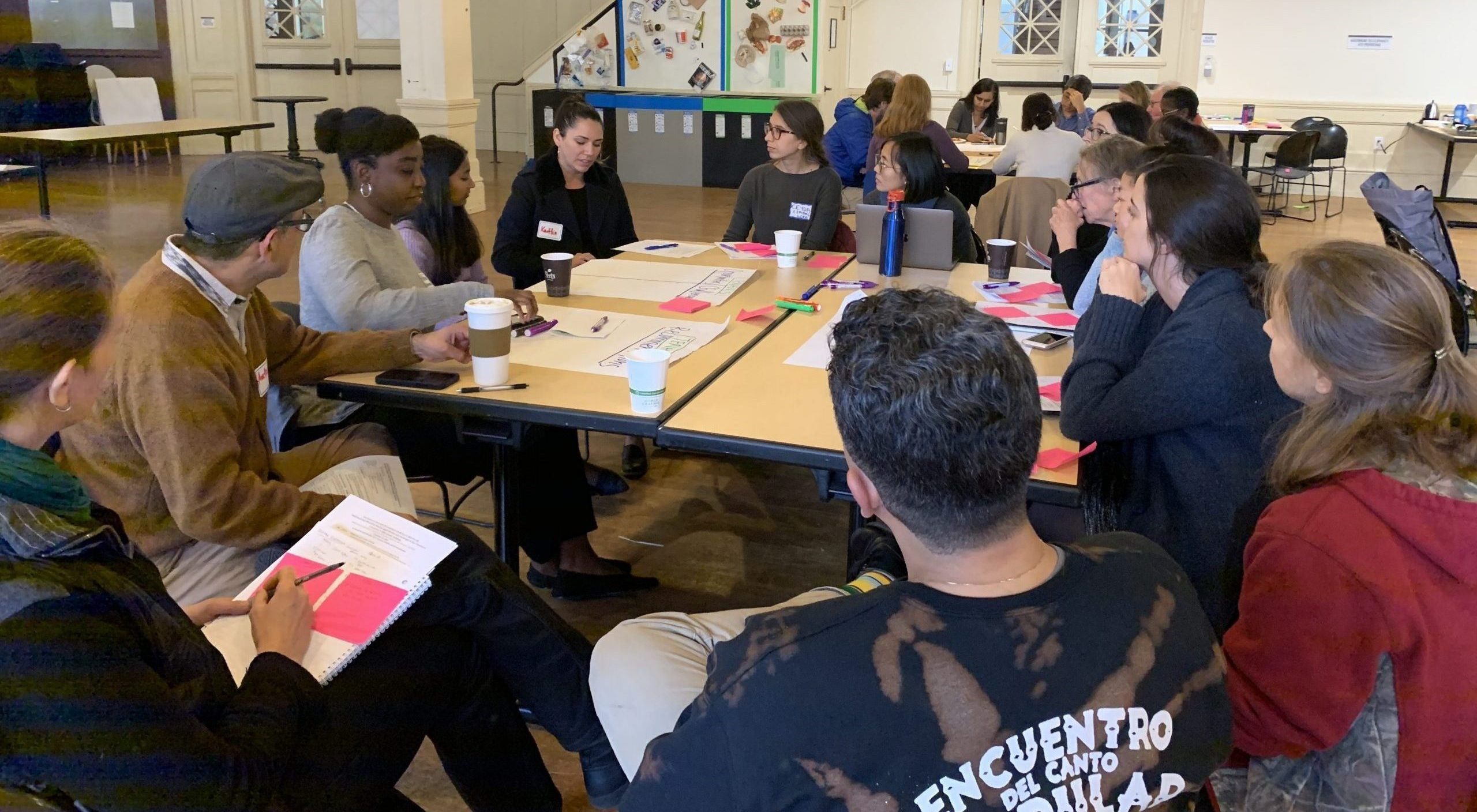
Smaller group discussion at an Anchor Partner Network (APN) meeting.
Community engagement is a key aspect of equity work. How did your team engage with city residents while developing the plan?
When we finally reached out to the public, we had already drafted the six sectors. We weren’t able to meet people in person because of COVID, so we did our public engagement process through Zoom. We had meetings, public workshops, and even pop-up presentations because groups called us and requested them.
Our outreach efforts ended up reaching a couple hundred thousand people, and we received hundreds and hundreds of comments during the online open house and the workshops. We documented and responded to all the feedback that we got from this process. It was a lot of work, but so worth it.
Communities everywhere are facing a complex web of issues, including climate change, social inequity, and housing affordability crises. How did you address this interconnection in the new Climate Action Plan and center these issues in the process of developing it?
We’ve been doing community greenhouse gas inventory for around ten years, and we know where emissions come from—it’s mainly fossil fuels used in buildings (natural gas) and trips made in gasoline-powered private cars and trucks. It was important to communicate that in tackling the climate challenge at hand, we’re not starting from scratch, but building on a lot of experience, momentum, and existing efforts. That said, we knew we needed to start taking bigger steps. With buildings, for example, it’s no longer enough to talk about percent better than Title 24. We need to plan to eliminate gas from all of our buildings in the next 20 years. And if we want people to drive less, we need an efficient, reliable, and attractive transit system that people will willingly choose on their own.
We also recognized that we haven’t been equitable with past housing policies, and the result has been displacement and loss of cultural identity. It’s driven people to suburbs that are a long car commute away from the city, and those commutes are taking time away from people and their families and adding to regional greenhouse gas emissions. By connecting the regional impacts of the displacement of BIPOC and low-income communities over the last 20 years to climate, we added a housing section to the plan that focuses on reversing those trends. It emphasizes the need to meet our RHNA (Regional Housing Needs Allocation) goals by adding a lot of new housing—preferably near transit—and funding the rehabilitation of existing housing.
At the end of the day, making a city more equitable and diverse is a more exciting concept for most people than the fact that we’re taking tons of carbon dioxide out of the atmosphere. Embedding that focus on the community benefits of climate action throughout the plan was a big priority for us.
Rich Chien, SF Environment Tweet
What are some of the misconceptions or barriers you face in implementing actions?
There are a lot of things within the private sector that will need to change. For example, if you own a home or commercial building connected to gas services, you need to start thinking about a plan to get your building off of gas and onto renewable electricity. There are a growing number of incentive programs to help pay for these upgrades, like BAYREN’s Home+ rebate program, but what’s challenging is that it’s other people’s money and behavior, and we (the City) don’t have control over that. That’s why it’s up to us to put the necessary elements in place, like making sure that people know about the financial incentives available to them. If there aren’t any, we’ll need to come up with our own to offset the costs; once they’re established, we need to prioritize lower-income, BIPOC communities to get these financial and technical support resources first.
There’s a lot of exciting development happening at the state level, with the California Public Utilities Commission (CPUC) increasing funding for electrification programs and new ones, like the TECH Clean California incentives, just launching. Contractors need to start seeing it as an opportunity, which will support an expansion of the workforce. We’re hoping that within several years, a lot of these pieces will be in place to support our policy work and help move the market in that direction.
Housing is another tough one. The people who do housing policy work in the city all have their hearts in the right places, but when it costs $600-700k to build one new affordable housing unit, it’s just too expensive to build. We need a lot more money, more people who support new housing development, and a more streamlined process so that projects can move forward more quickly.
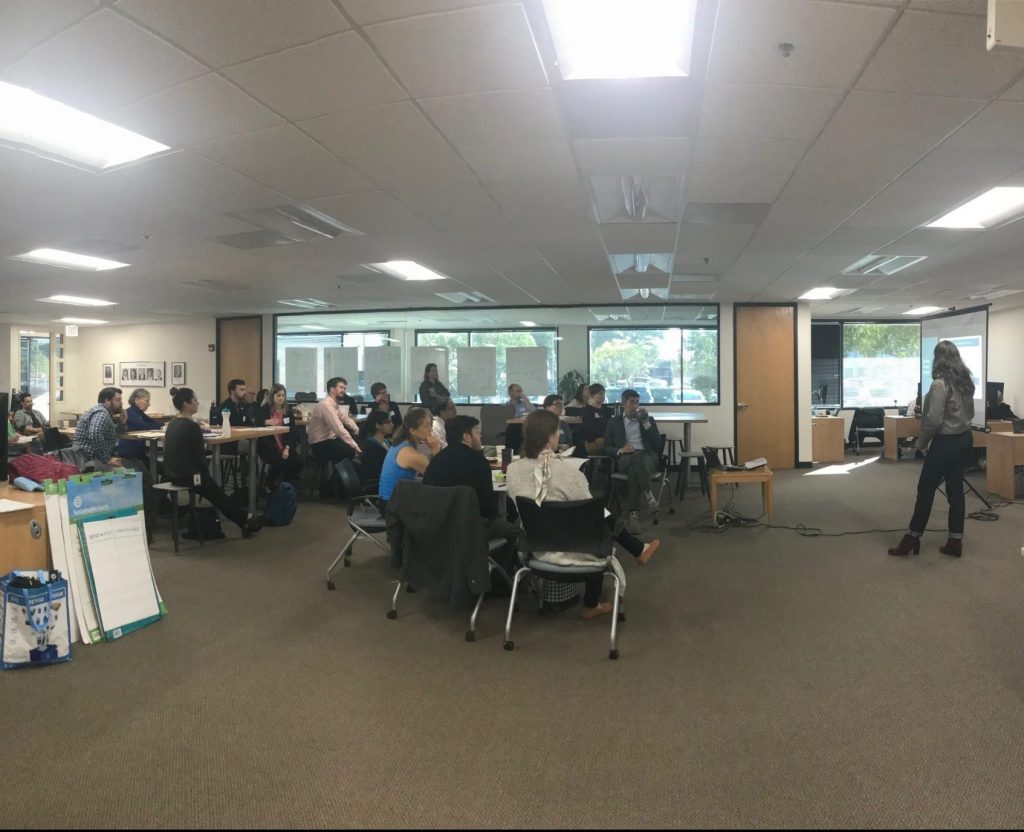
APN meeting about workforce development.
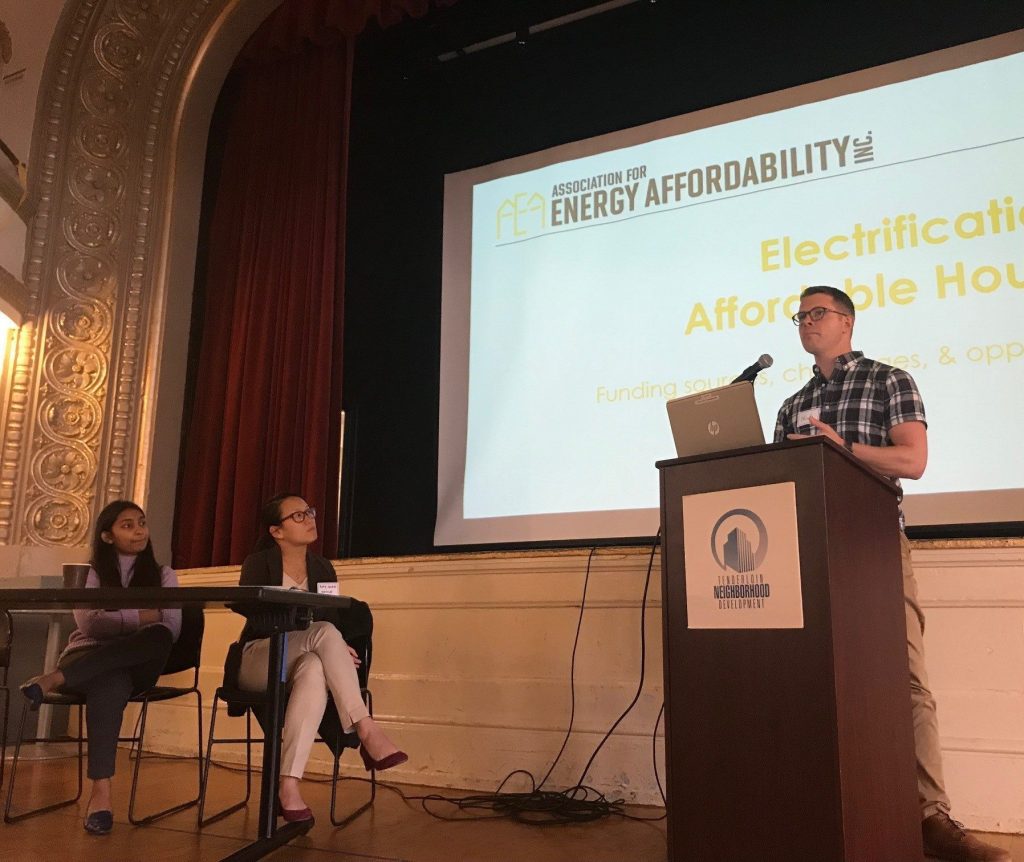
Session on electrifying affordable housing at an APN meeting.
The City has been working on an environmental justice framework. How has it been used so far?
The development of the Environmental Justice Framework is being led by the Planning Department, one of our core colleagues in the CAP process. We were striving to come up with equity performance indicators for each sector’s strategies, but for every metric, we had to ask ourselves: How would we actually collect that data? Is it available?
The Planning Department’s environmental justice map, which builds on the CalEnviroScreen map, gives us a more localized look at San Francisco communities. It allows us to clearly say that certain neighborhoods have more resources and others have less, based on different criteria and data. When we weren’t able to come up with a performance indicator to map a specific aspect of equity, we could point to the environmental justice map to see the availability of assistive resources for people in different zones of the city. We were very aligned with this framework during the CAP process.
What is one of your favorite aspects of the plan that people might not expect to be included?
Getting to apply the R-SEAT [findings available in Appendix D of the plan] was really exciting. We had never done anything like it before and got to do a lot of really interesting and impactful work in developing it.
To determine the plan’s actions and strategies, we started by brainstorming everything we could do to start eliminating emissions within the six CAP sectors. We also looked at where we could leverage current city activities in support of climate goals. Then, for each sector’s supporting actions, we conducted an R-SEAT assessment, using the same inquiry process to identify blind spots in how the language was written. We often came up with a whole separate action to address an equity component we felt was missing. It’s gained a lot of attention within the city family as a really innovative approach to embedding equity in our work. And it’s attracting more grant funds so people like my colleagues can do the next iteration of it.
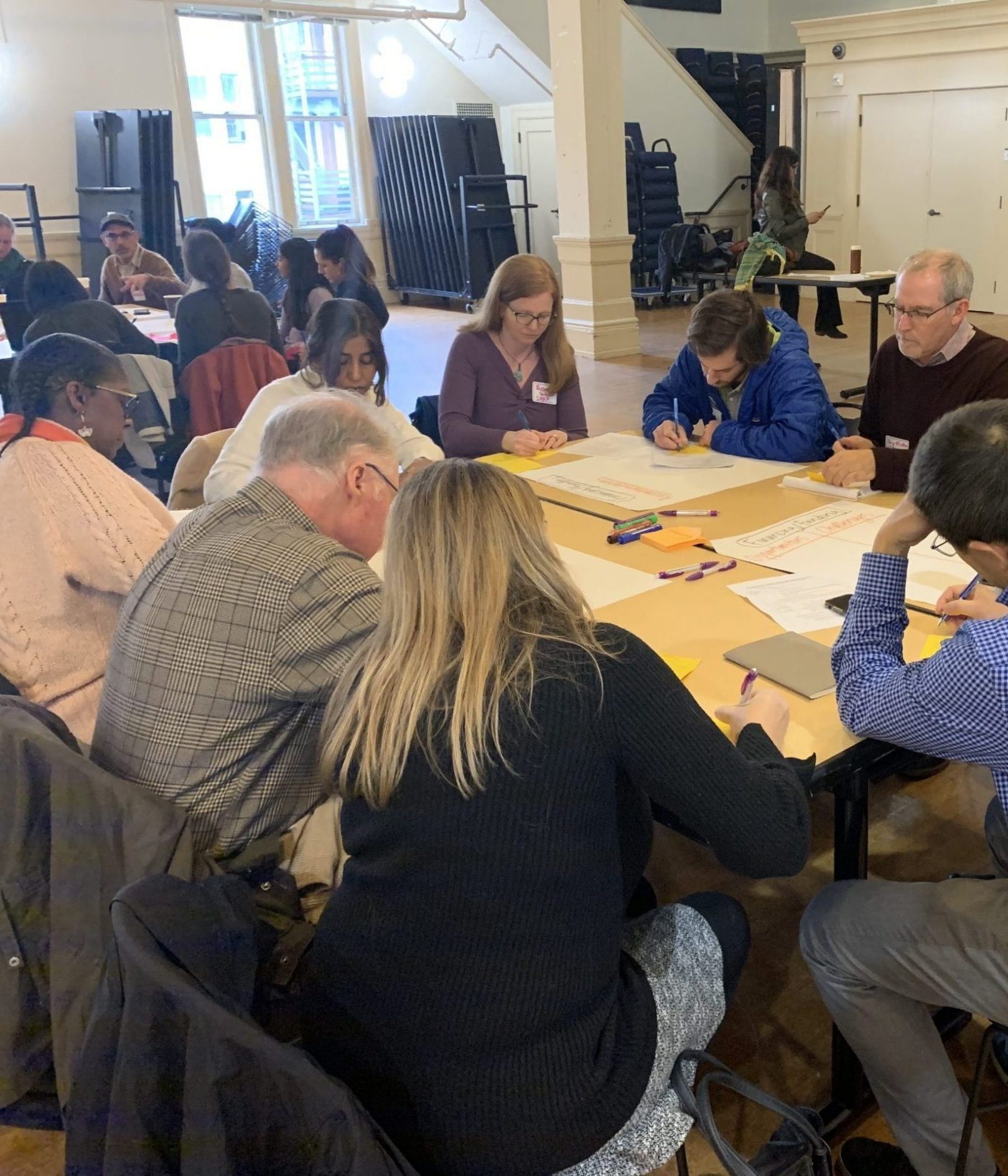
Group discussion at an APN meeting.
What’s regenerative about my work with the city is that we’re coming up with new ways to communicate about complex topics, to share what we're doing in a transparent way, and to talk about equity authentically. We’re rebuilding the bridges between other individuals, other communities, and different opinions.
Rich Chien, SF Environment Tweet
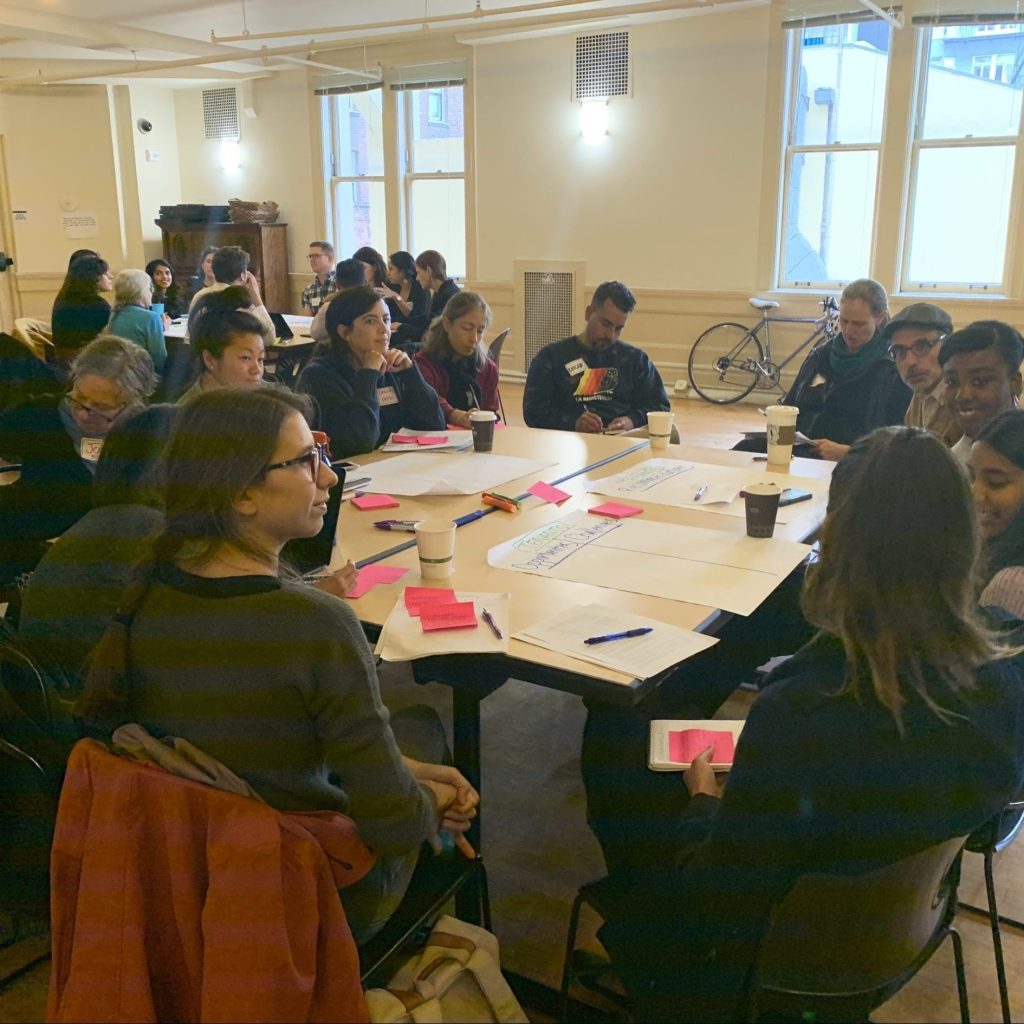
Group discussion at an APN meeting.
What does ‘regenerative’ mean to you? How might that term apply to the work that you do?
I think about [regenerative] in terms of social capital. We live in a time of divisiveness and polarizing differences, and preconceptions about others often hold up the work that we need to do faster than ever. But the engagement process for the CAP was multifaceted and resulted in deep engagement with a lot of different stakeholders. We were able to bring city staff, community leaders, public leadership, and businesses to the table, and all of the conversations we had are reflected in our climate actions.
So in general, I think what’s regenerative about my work with the city is that we’re coming up with new ways to communicate about complex topics, to share what we’re doing in a transparent way, and to talk about equity authentically. We’re rebuilding the bridges between other individuals, other communities, and different opinions. In that way, I think anyone has the potential to do work that is regenerative.
How can you get involved?
Follow SF Environment on social media
Make sure to check out Appendix D for the summary findings of the R-SEAT, and see the City’s Racial Equity Action Plan here.
Each action will have its own implementation and stakeholder process, so there will be plenty of opportunities to participate. Sign up for updates here.
Join San Francisco for their 4th annual Climate Action Month! Their calendar of activities and events can be found here.
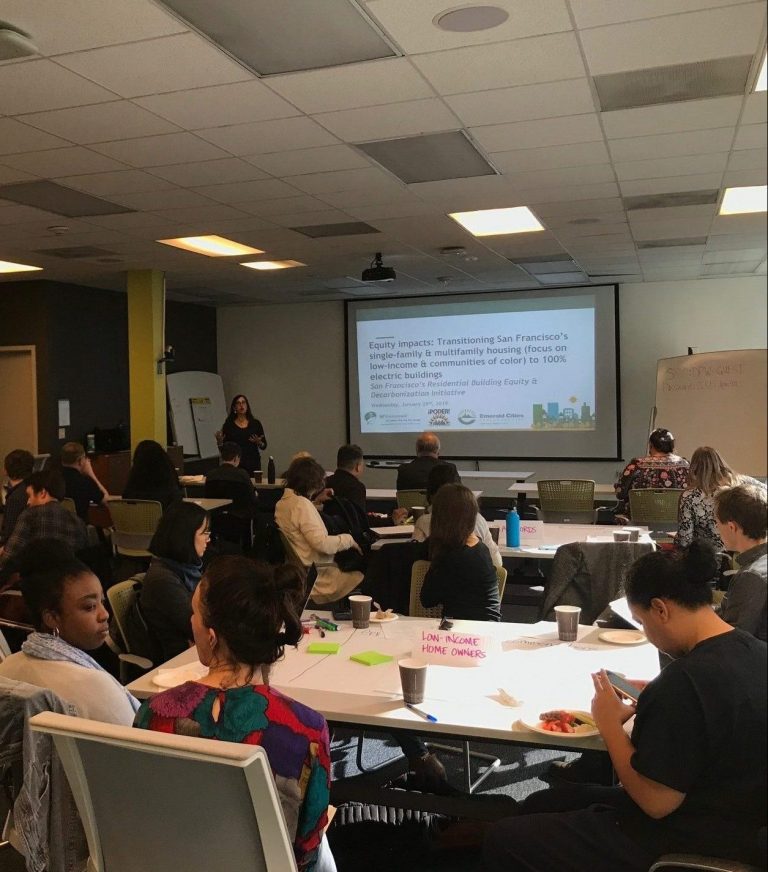
An APN session focused on the equity impacts of transitioning to all-electric buildings in San Francisco.

